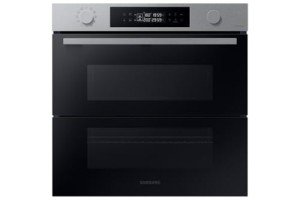10 Things Your Competitors Can Learn About Built-In Oven

Understanding Built-in Ovens and Hobs: The Perfect Kitchen Combination
As contemporary kitchen areas develop, built-in appliances are ending up being significantly popular for both performance and aesthetic appeals. Amongst these appliances, built-in ovens and hobs stand apart as essential parts for any cooking enthusiast or home cook. This short article explores the advantages, functions, and factors to consider surrounding built-in ovens and hobs. It also attends to common questions, providing a thorough guide to these kitchen essentials.
What are Built-in Ovens and Hobs?
Built-in ovens are integrated into kitchen cabinets, creating a streamlined, seamless look. They come in various types, consisting of traditional, convection, and steam ovens, each dealing with various cooking approaches. Hobs, on the other hand, are the cooking surfaces that incorporate with the kitchen countertop. They can be gas, electric, or induction, permitting cooks to select based on their cooking style and energy choice.
Advantages of Built-in Ovens and Hobs
- Space-Saving: Built-in models take full advantage of kitchen area by eliminating the requirement for freestanding systems, producing an open and airy environment.
- Visual Appeal: Their streamlined design contributes to a modern, structured appearance in the kitchen.
- Enhanced Functionality: Built-in ovens frequently include sophisticated cooking technology, using a variety of functions like self-cleaning and smart controls.
- Customization: Manufacturers use a variety of surfaces and styles, permitting house owners to customize their appliances to match their kitchen décor.
Types of Built-in Ovens
1. Traditional Ovens
Standard ovens utilize radiant heat from the bottom and can be perfect for baking.
2. Convection Ovens
Stove have a fan that circulates hot air, making sure even cooking. They reduce cooking time and are ideal for roasting meats or vegetables.
3. Steam Ovens
Steam ovens use damp heat to cook food, preserving nutrients and flavors. They are ending up being significantly popular amongst health-conscious cooks.
4. Microwave Ovens
These ovens offer fast heating and cooking and serve different functions, from reheating leftovers to baking.
Kinds of Hobs
1. Gas Hobs
Gas hobs utilize gas or propane for cooking. They supply instant heat control, making them a favorite among professional chefs.
2. Electric Hobs
Electric hobs have solid or ceramic surfaces that heat up via electric coils. They are simple to tidy but may take longer to heat than gas models.
3. Induction Hobs
Induction hobs use electro-magnetic energy to directly heat up pots and pans, providing fast heating and energy performance. They cool off quickly and supply a safer cooking experience.
Aspects to Consider When Choosing Built-in Ovens and Hobs
When choosing built-in ovens and hobs, numerous elements need to be thought about:
1. Area Limitations
Procedure the available space in your kitchen to guarantee that the appliances will fit seamlessly into the cabinets.
2. Cooking Style
Consider your cooking habits. If you frequently bake, a stove might be ideal. On the other hand, induction hobs are great for security and effectiveness.
3. Budget plan
Pricing differs considerably based upon functions and brands. Setting a spending plan assists narrow down the choices.
4. Energy Source
Determine whether you want gas or electric appliances. This choice can affect cooking performance and energy costs.
5. Looks
Choose surfaces and styles that complement your kitchen's style. Stainless-steel is a popular choice for a contemporary appeal.
Comparison of Built-in Ovens and Hobs
| Feature | Built-in Oven | Built-in Hob |
|---|---|---|
| Type | Convection, steam, and so on. | Gas, electric, induction |
| Cooking Versatility | High | Moderate to high |
| Cleaning up Ease | Differs by design | Usually easy to tidy |
| Installation Style | Integrated in kitchen cabinetry | Flush with counter top |
| Energy Efficiency | Varies by model | Induction typically most efficient |
FAQs About Built-in Ovens and Hobs
1. Are built-in ovens more costly than freestanding models?
Yes, built-in ovens typically include a higher price tag due to their design and setup requirements. However, they frequently use more sophisticated functions.
2. Can I change my existing freestanding oven with a built-in model?
Yes, it's possible to replace a freestanding oven with a built-in design, however you may require to make changes to your cabinets and kitchen design.
3. What maintenance do built-in ovens and hobs require?
Routine cleansing is necessary. Many built-in ovens included self-cleaning functions. It's also important to keep the hobs without spills and grease.
4. integrated electric oven and hob for families?
Induction hobs are thought about more secure than gas or electric choices because they only warm the pots and pans, decreasing the threat of burns or accidents.
5. How can I maximize the performance of my built-in oven and hob?
To maximize performance, constantly pre-heat the oven when needed, utilize the correct size pots or pans on the hob, and consider using the recurring heat from your hob after cooking.
Built-in ovens and hobs provide numerous benefits, making them popular options for modern kitchens. Their space-saving designs, advanced functions, and visual appeal contribute to their high need. By considering elements like space, cooking style, and budget plan, homeowners can choose the perfect combination of appliances that best match their culinary needs. Whether through gas, electric, or induction hobs, and a range of oven types, the ideal built-in kitchen appliances can enhance the cooking experience while elevating the overall aesthetic of the kitchen.

